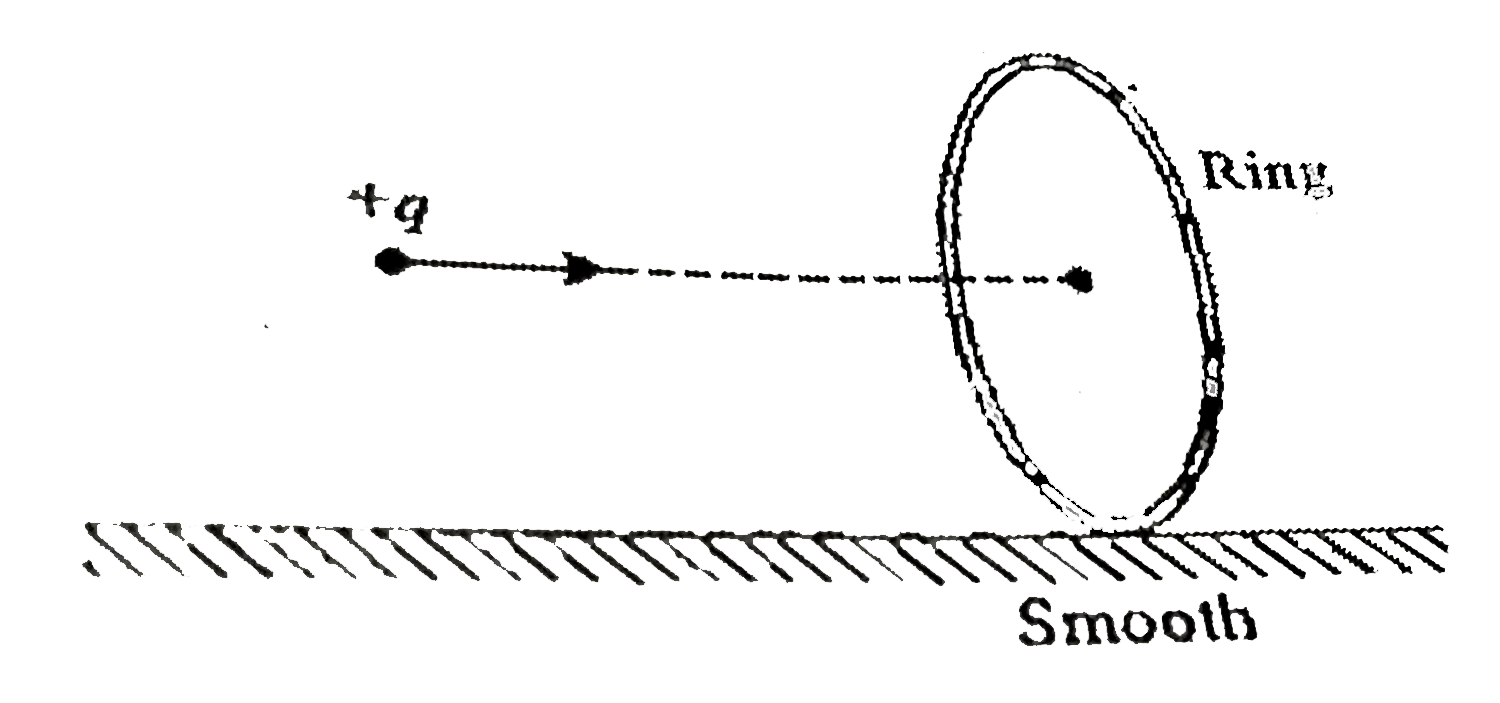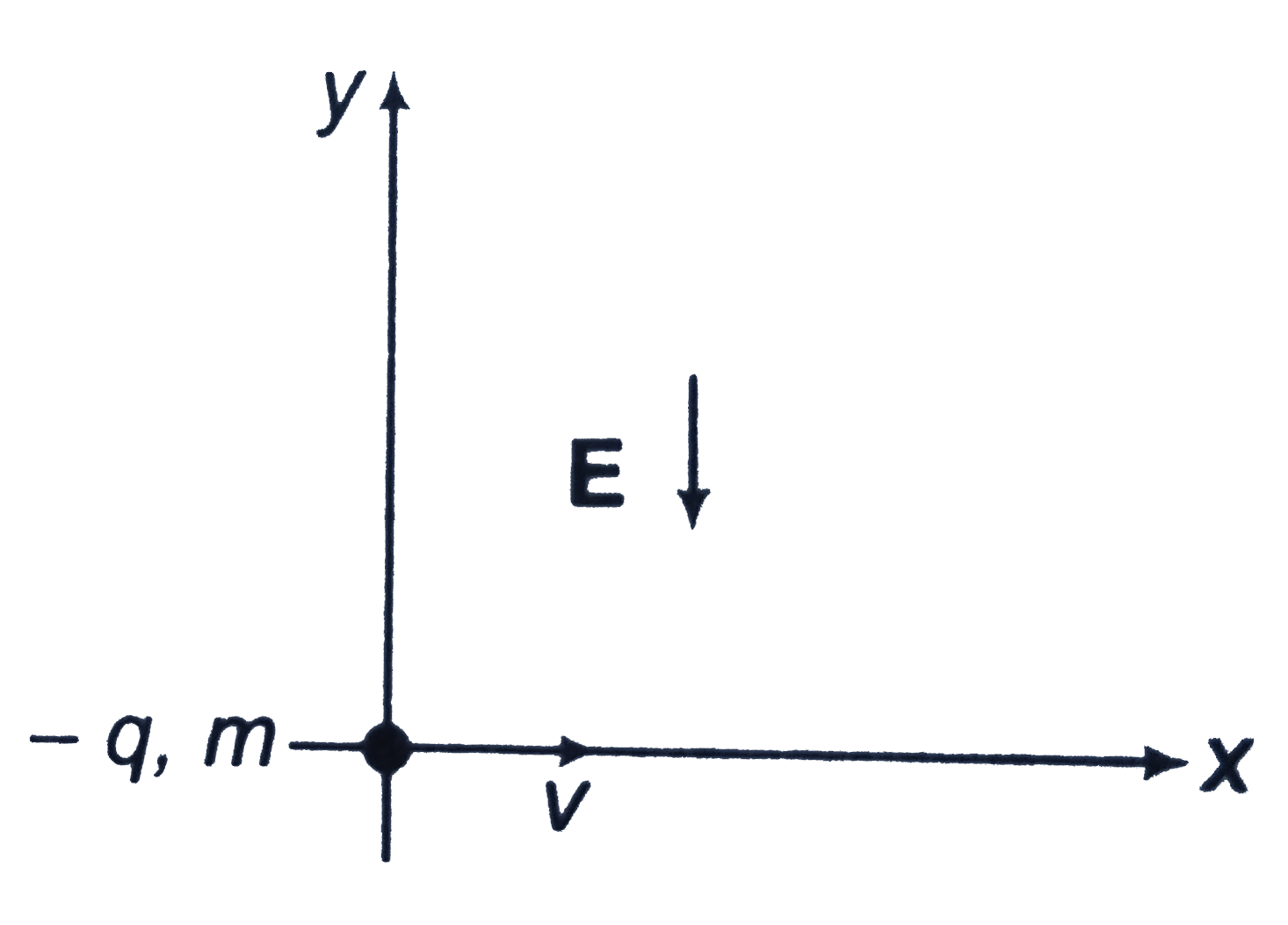A proton of mass and charge e is projected from a very large distance towards an particle with velocity . Intially, particle is at rest, but it is free to move. If gravity is neglected, then the minimum separation along the straight line of their motion will be
The correct Answer is:B
Topper's Solved these Questions
Similar Questions
A proton of mass m and charge e is projected from a very large distance towards an α−partic≤ with velocity v. Initially α−partic≤ is at rest, but it is free to move. If gravity is neglected, then the minimum separation along the straight line of their motion will be
View SolutionA particle of mass m and charge +q approaches from a very large distance towards a uniformly charged ring ofradius Rand charge, mass same as that of particle, with initial velocity v0 along the axis of the ring as shown in the figure-1.420. What is the closest distance of approach between the ring and the particle? Assume the space to be gravity free and frictionless :

View Solution
Knowledge Check
A particle of mass m and charge −q is projected from the origin with a horizontal speed v into an electric field of intensity E directed downward. Choose the wrong statement. Neglect gravity
 AThe kinetic energy after a displacement y is qEyBThe horizontal and vertical components of acceleration of ax=0,ay=qEmCthe equation of trajectory is y=12(qEx2mv2)DThe horizontall and verticasl displacements x and y after a time t x=vt and y=12ayt2
AThe kinetic energy after a displacement y is qEyBThe horizontal and vertical components of acceleration of ax=0,ay=qEmCthe equation of trajectory is y=12(qEx2mv2)DThe horizontall and verticasl displacements x and y after a time t x=vt and y=12ayt2A particle of mass m is projected upword with velocity v=ve2 (ve) escape of the particle is
A−GMm2RB−GMm4RC−3GMm4RD−2GMm3RThe closed distance of approach of an α− particle travelling with velocity V towards a stationary nucleus is d.For the closest distance to become d3 towards a stationary nucleus of double of the charge,the velocity of projection of the α− particle has to be
A6VB√6VCV56D3V2
A particle of mass m and charge +q approaches from a very large distance towards a uniformly charged ring ofradius Rand charge, mass same as that of particle, with initial velocity v0 along the axis of the ring as shown in the figure-1.420. What is the closest distance of approach between the ring and the particle? Assume the space to be gravity free and frictionless :

View SolutionA particle (A) having charge Q and mass m is at rest and is free to move. Another particle (B) having charge q and mass m is projected from a large distance towards the first particle with speed u. (a) Calculate the least kinetic energy of the system during the subsequent motion. (b) Find the final velocity of both the particles. Consider coulomb force only.
View SolutionA particle of mass m is projected upword with velocity v=ve2 (ve) escape of the particle is
View SolutionThe closed distance of approach of an α− particle travelling with velocity V towards a stationary nucleus is d.For the closest distance to become d3 towards a stationary nucleus of double of the charge,the velocity of projection of the α− particle has to be
View SolutionWhich of these is true regarding an α particle with mass 'm' projected towards the nucleus with velocity 'v ?
View Solution
